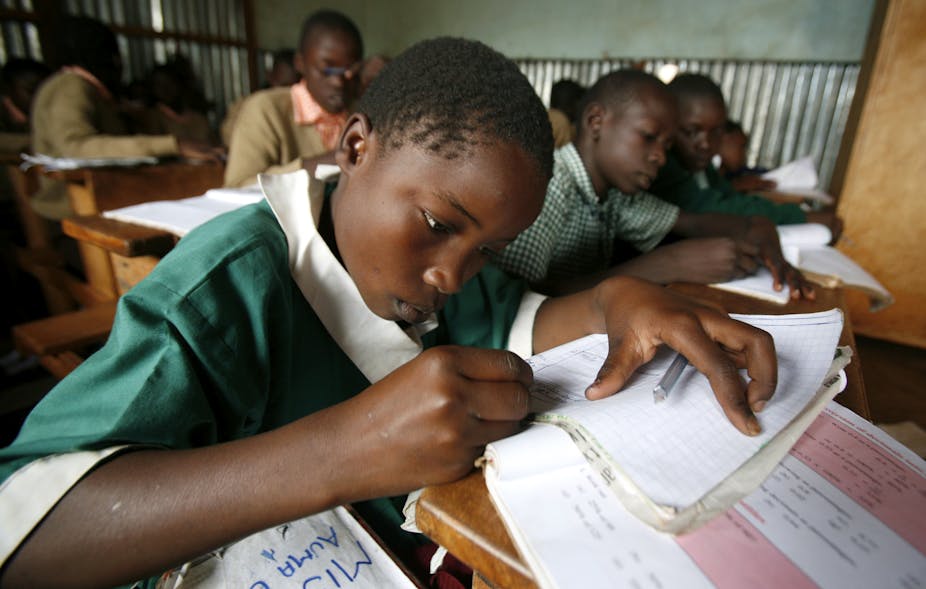A team of international experts have just published the most comprehensive analysis to date of how children on the cusp of adolescence perceive growing up as a boy or girl. The Global Adolescent Study involved a series of interviews conducted over the last four years with hundreds of early adolescents and their parents in 15 countries. These included Burkina Faso, the Democratic Republic of Congo, Egypt, Kenya, Malawi, Nigeria and South Africa. We asked lead researcher Kristin Mmari to explain the significance of the study
What did the 15-country global study set out to establish?
Our overarching question was to explore how boys and girls from diverse cultural settings experience their transitions into adolescence. Questions we were interested in finding answers to included: what changes? How do these changes vary by boys versus girls? How do these changes vary by geographic and cultural location?
We wanted to address these questions because the way in which adolescents experience biological and social changes differ. Factors that play a role include gender, cognitive abilities, educational, emotional, life experiences as well as cultural and social contexts. Yet information on how these factors manifest and inform gender differences across contexts is quite limited, particularly from low and middle-income countries.
A particularly interesting, yet unknown aspect of early adolescence, is how boys and girls establish relationships that ultimately shape their sexual and overall health from early to late adolescence.
What are the most important findings from African countries involved in the study?
So far, only Assuit in Egypt, Nairobi, Kenya, and Ile Ife, Nigeria have been involved. Another four countries, the Democratic Republic of Congo, Burkina Faso, Malawi, and South Africa, will be included in future products and analyses.
The key takeaways from the study so far are:
First global study to demonstrate that we can measure gender norms around the world among this young age group ages 10-14 years old. Before this study, it was not known whether adolescents in this age group would be able to accurately provide information about what it meant to be an ‘adolescent’ and the attitudes and beliefs about gender that influenced their transition into adolescence. Not only did we learn that it’s possible to collect data from this age group across multiple cultural settings, but that in fact, adolescents are astute observers.
There are consistent forms of patriarchy around the world: girls are perceived to be vulnerable and in need of protection to preserve their sexual and reproductive health. Their mobility and social space is greatly reduced and often enforced by parents to “preserve their reputation”. Girls who are observed to be seen with boys are automatically assumed to be in romantic and sexual relationships with them, and this can often ruin their reputation or their families.
Boys expand their social space and are given much more freedom and independence. But they also face increased risks related to the environment, such as increased engagement in violence and/or substance misuse.
There were more similarities than differences between the sub-Saharan African contexts and the other sites included in the study. However, boy-girl relationships were frowned upon and subjected girls to sexual and reproductive health risks, such as pregnancy and gender based violence; as a consequence, many parents did not want their daughters in the company of boys.
The goal of the study was to get insights that could be used to inform policies that promote sexual and reproductive well-being. What insights were gained and what key interventions should follow?
We already know that norms around gender inequitable lead to poor health outcomes among older adolescents and young adults. For example, research has shown that when men and boys adhere to traditional views about masculinity, they are more likely to report having used violence against a partner, to have a sexually transmitted infection, and used substances Pulerwitz and Barker, 2008. Other studies have found correlations between beliefs in gender inequitable norms and HIV transmission rates, contraceptive use, and gender based violence (Barker and Ricardo, 2005).
This study shows that these norms are being solidified much earlier than we thought. Interventions then need to start earlier and should include both boys and girls. They should also address gender as a system that’s made up of multiple actors, ranging from parents, teachers, peers, neighbourhoods, and the broader media and policy environment.
What happens next?
Phase 2 of the study will be a large quantitative survey to examine the extent to which changes in beliefs of gender inequitable norms lead to changes in health outcomes, and the factors that may contribute to these changes.

